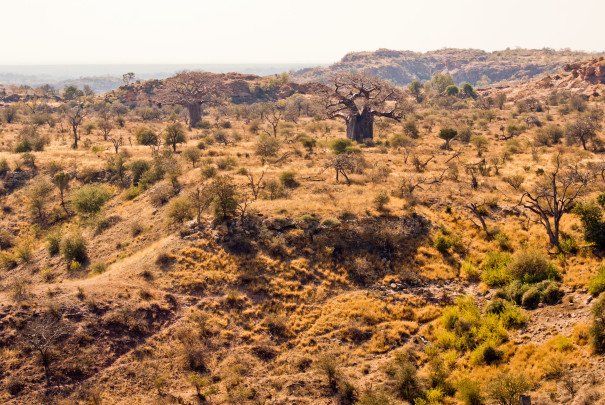
Bring Your Own Bottle When Drinking With the Ancients

Bring Your Own Bottle When Drinking With the Ancients
Whisky Sodas at Mapungubwe
It’s a case of BYOB (Bring Your Own Bottle) if you’re having sundowners at Mapungubwe World Heritage Site. This remarkable place of the ancients is in the arid northern reaches of South Africa, 40 miles from the nearest town, in a vast national park on the banks of the Limpopo River where elephant herds wander and the landscape is studded with baobab trees.
I poured myself an extremely generous whisky with soda and extra ice. My drinking companion, Ruth, went for a large glass of red wine, the large glass having been carefully transported wrapped up in a kanga (cloth). The sundowner spot at Mapungubwe is a simple wooden deck on stilts overlooking the confluence of the Shashe and Limpopo Rivers, where three countries unite: South Africa, Botswana, and Zimbabwe.
A thousand years ago, this was the center of a flourishing African civilization dubbed South Africa’s first city of gold. During the apartheid years, Mapungubwe was kept secret for ‘military reasons’ but through the course of democracy its significance as a cultural heritage site emerged and it was granted World Heritage Site status in 2002.
Rudyard Kipling’s great, grey, green, greasy Limpopo supports a massive eco-system of elephants, plains game, and birds, as well as people, who settled here from as early as 200 AD. The climate was warmer and wetter then, and the river flowed constantly, attracting Nguni people who came down from Zimbabwe and settled along rivers like the Limpopo, Levhuvhu, Shashe, Shingwedzi, Letaba—a mouthful of tongue-rolling African names.
Apart from Johannesburg—which Ruth and I agreed was a kind of Sodom and Gomorrah in the bushveld, and one we really rather liked—most cradles of civilization have sprung up alongside major rivers. Mapungubwe originated on the banks of the Limpopo and became, in the 12th century, a vast gold-based empire that traded with Arabs in Mozambique, other African kingdoms to the north and west, China, Persia, and Egypt. In its heyday, it was settled by thousands and the empire’s rule extended for thousands of miles.
Our glasses suddenly appeared empty and the sun was turning the landscape golden, not unlike the fever trees and the famous Mapungubwe golden rhino that was excavated here in the 1930s and is now safely housed at the University of Pretoria. “Let’s re-party,” I said to Ruth.